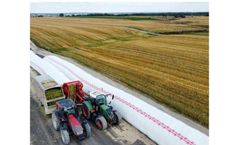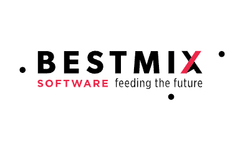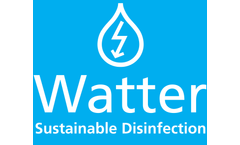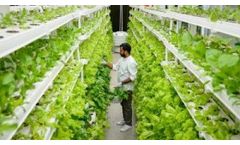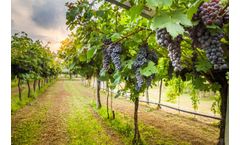Refine by
Yeast Articles & Analysis
95 articles found
Limiting oxygen exposure reduces the risk of yeast and mold growth. These contaminants consume essential carbohydrates and proteins, leading to nutrient losses, lower digestibility, and potential mycotoxin production that can harm livestock health. ...
These live microorganisms, primarily bacteria and certain yeasts, can confer health benefits when administered in adequate amounts. ...
In a typical Y1H assay, a DNA sequence of interest (the 'bait') is cloned upstream of a reporter gene, such as LacZ or HIS3, in a yeast expression vector. This bait-reporter construct is then introduced into yeast cells. ...
The yeast cell wall could not improve these parameters. Yiannikouris et al. (2004) studied the interaction of yeast cell wall with zearalenone in vitro. ...
THE CLIENT The Client is a world leader in the development, production and sale of yeast, bacteria and special ingredients. Today, the company is present, through plants, distribution centres or representative offices, on all 5 continents and in 40 countries. ...
Fungal colonies Fungi is a community of eukaryotic species such as yeast, filamentous fungi, and mushrooms. Under damp and warm conditions, fungi grow well. ...
Mycelial separation happens when a fungal mycelium, with each part expanding into a different mycelium, splits into parts. Somatic cells form buds in yeast. A bulge forms on the side of the cell during budding (a type of cytokinesis), the nucleus separates mitotically, and the bud eventually detaches itself from the mother cell. ...
Since its foundation in 2004, AB Vista has grown to become a leading player in feed enzymes and one of the largest suppliers of yeast and natural betaine. The company focuses on four main subsectors: poultry, pigs, ruminants, and aquaculture. ...
ByBESTMIX
This process uses bioreactors to convert milk into lactic acid bacteria for yoghurt and yeast cells for transforming sugars into alcohol for beer brewing.4 It also provides an alternative to traditional cheese-making, where natural rennet is replaced with yeast cells grown in a bioreactor.4 Furthermore, cell mass harvested from cocoa beans can be used to create a ...
As no harmful chemicals are used, no personal protective equipment is needed No records need to be kept because HOCl does not contain CMR substances It is effective against various types of bacteria, viruses, fungi and yeasts. It is ready-to-use and does not require complicated equipment. ...
Bacteria or fungi in humans and animals mainly include: Clostridium butyricum, Lactobacillus, Bifidobacterium, Lactobacillus acidophilus, Actinomycetes, Yeasts, etc. The intestinal flora is the largest pool of human bacteria and the largest micro-ecosystem. ...
Over the years, many new flavor enhancers have been developed, including meat extracts, yeast extracts, hydrolyzed animal proteins, and hydrolyzed vegetable proteins. ...
You obviously don’t need a centrifuge for winemaking. For nearly 10,000 years humans have been stomping grapes, mashing up fruit and honey, or spitting starchy root pulp into jars, then letting it ferment. Wine happens. That said, most commercial-scale winemakers use centrifuges. Why? Because centrifugation is a quick and effective method for separating liquids and insoluble matter without ...
ByTrucent
Ozone in vertical farming is an excellent organic fungicide and biocide. In addition to its high efficiency and the advantages of not leaving chemical residues on the leaves. When ozone is dissolved in water favors root growth and increases dissolved oxygen in plants. About 90% of the water used worldwide is for agriculture. Ozone helps reduce the amount of water and helps inactivate viruses ...
Fermentation, the chemical process that uses yeast to convert sugars to ethanol, is at the heart of the wine production process and requires accurate CO₂ measurement to ensure quality wines. Temperatures and conditions in wineries are very carefully controlled to ensure that fermentation does not occur too fast, distorting the flavour and alcohol content of the wine. The type of ...
For example, in the processing of flour products, adding fungal α-amylase can enhance the reproductive capacity of yeast and shorten the fermentation time of bread dough. β-amylase is mainly purified by fermentation of Aspergillus, Rhizopus and Endosporium, also known as starch 1,4-maltosidase and high maltase. ...
Organic fertilizer pellet machine is a type of devices that uses poultry and pig manure as the main basic materials, includes a certain amount of nitrogen fertilizer, phosphate fertilizer, potassium fertilizer, magnesium sulfate, ferrous sulfate as well as other materials, as well as makes use of rice bran, yeast, soybean dish as well as sugar to ferment for a certain ...
This guide is here to help you get real answers with real science. Why are yeast infections so complicated? A vaginal yeast infection, also known as vulvovaginal candidiasis (VVC) or vaginal thrush, is a very common fungal infection caused by an overgrowth of yeast. In fact, approximately 75% of women will experience at least one ...
ByJuno Bio
Extracellular enzymes are mainly synthesized by fungi, and cell wall-bound enzymes are mainly produced by yeast. 4. Appropriate pH increases cell wall permeability, increases the ratio of extracellular enzymes, and decreases the ratio of the other two enzymes. ...
The beneficial bacteria or fungi in humans and animals mainly include: Clostridium butyricum, Lactobacillus, Bifidobacterium, Actinomyces, yeast, etc. At present, the most powerful products are mainly compound active probiotics composed of the above types of microorganisms, which are widely used in the fields of bioengineering, industry and agriculture, food safety and life and ...

